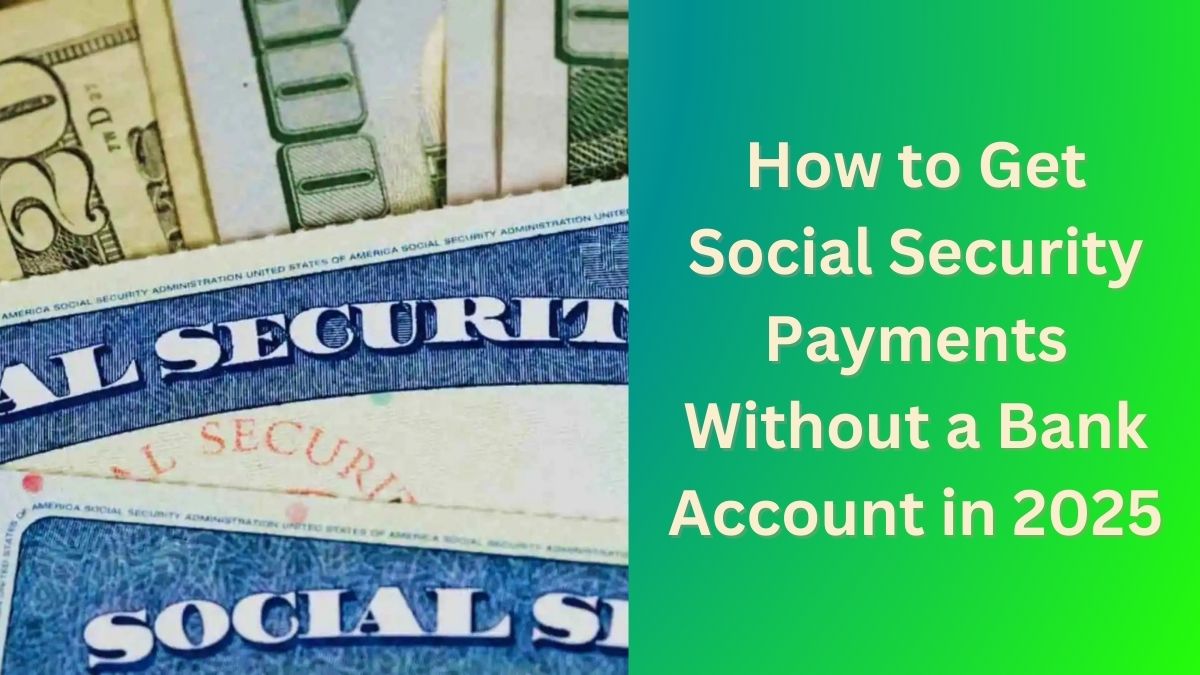Many Americans rely on Social Security payments for their financial well-being. But what happens if you don’t have a bank account? In 2025, new changes will ensure that those without a traditional bank account can still receive their benefits. This guide will explain how you can access your Social Security payments, the available options, and the steps you need to take to ensure you receive your funds on time.
How Social Security Payments Work
The Social Security Administration (SSA) provides monthly benefits to retirees, disabled individuals, and survivors of deceased workers. Traditionally, these payments are deposited directly into bank accounts. However, not everyone has a bank account, and alternative payment methods exist to accommodate such individuals.
Why Direct Deposits Are Encouraged
The U.S. Treasury Department prefers electronic payments for Social Security benefits because they are faster, safer, and more reliable. Paper checks can be lost, stolen, or delayed. Despite these advantages, millions of Americans still do not use traditional banking services.
Payment Options for Unbanked Individuals in 2025
If you do not have a bank account, you can still receive your Social Security payments through these methods:
1. Direct Express® Debit Card
The Direct Express® card is a prepaid debit card issued by the U.S. Treasury. It is the primary method for unbanked individuals to receive Social Security payments. Here’s how it works:
- Your benefits are loaded onto the card each month.
- You can use the card to make purchases, pay bills, and withdraw cash from ATMs.
- There are no sign-up fees or monthly maintenance charges.
- It offers fraud protection and security against lost or stolen funds.
2. Electronic Transfer Accounts (ETAs)
ETAs are federally insured accounts designed for direct deposit payments. If you do not have a regular bank account, you can open an ETA at a participating financial institution. ETAs offer:
- A low-cost banking option.
- No overdraft fees.
- Easy access to Social Security benefits.
3. Payee Services
If managing money is difficult for you, the SSA can assign a representative payee. This person (a trusted individual or organization) receives your Social Security payments and manages them on your behalf.
Steps to Ensure You Receive Your Payments in 2025
To continue receiving Social Security payments, follow these steps:
- Choose a Payment Method – Decide whether you want to receive payments via a Direct Express® card, an ETA, or through a representative payee.
- Sign Up for Direct Express® – If you prefer a prepaid debit card, enroll by calling the Direct Express® helpline or visiting their website.
- Open an ETA – Find a bank or credit union that offers ETAs and open an account.
- Assign a Representative Payee (if needed) – If you require assistance, work with the SSA to designate a trusted person to manage your benefits.
- Update Your Payment Details with the SSA – Ensure your preferred payment method is on file with the Social Security Administration.
- Be Aware of Scams – The SSA never asks for personal information through phone calls, emails, or text messages. Be cautious of fraudsters posing as Social Security officials.
Benefits of Electronic Payments
Switching to electronic payments comes with many advantages, including:
- Faster Access to Funds – Payments are deposited instantly on the due date.
- Increased Security – Reduces the risk of lost or stolen checks.
- Convenience – No need to visit a bank to deposit or cash a check.
- Better Budgeting – Digital payment tracking helps manage finances better.
What If You Still Prefer a Paper Check?
Starting in 2025, paper checks will only be issued in rare circumstances. If you still prefer a paper check, you may need to request a waiver due to extreme hardship or lack of electronic access. However, the SSA strongly encourages using electronic payment methods.
Conclusion
Receiving Social Security payments without a bank account in 2025 is easy, thanks to options like the Direct Express® card, Electronic Transfer Accounts, and representative payees. To avoid payment disruptions, ensure your information is up to date with the SSA. Electronic payments are safe, fast, and reliable, making them the best choice for most beneficiaries. Stay informed and choose the best payment option that suits your needs.

